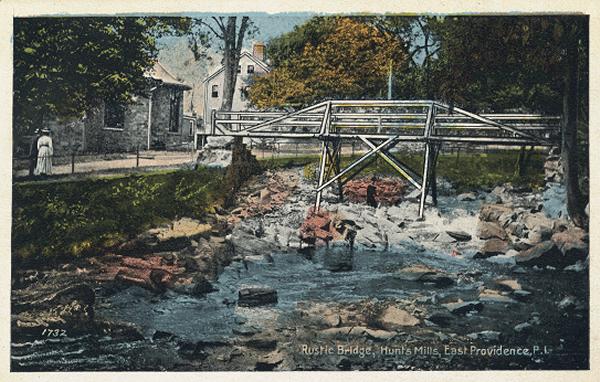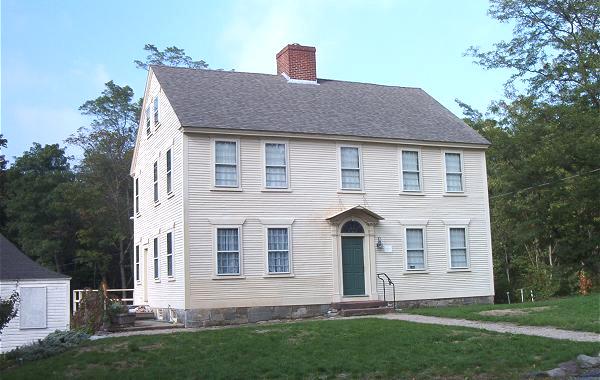History of the John Hunt House
The John Hunt House on Hunt’s Mills Road in the City of East Providence serves not only as the hub of activities associated with the Historical Society, but also as a house museum and repository for articles of significance to the city.
From research done thus far, we believe that the Hunt House was built for Lt. John Hunt, Jr. (1720-1806) around 1750. Therefore the house has the distinction of having been under the jurisdiction of the British Crown, the town of Rehoboth in the Massachusetts Bay Colony, the Town of Seekonk in the State of Massachusetts and finally in 1862 the Town (now city) of East Providence in Rhode Island.
John Jr.’s home, called “John Hunt’s Mansion House” by a relative writing in 1848, was built in the Georgian style with a large center chimney. It has a keeping room, borneing room, buttery, parlor and bedroom on the first floor, five bedrooms on the second and two rooms in the attic. There are three fireplaces on each of the first two floors, a fireplace with beehive oven in the basement summer kitchen, and a smoke room in the attic.
John Hunt, who was known as a clothier by trade, was also a Lieutenant in the Militia. He was the great grandson of Peter Hunt, one of the fifty-eight Seekonk Proprietors who owned land in the original Ring of the Green of Rehoboth in 1645. It is reported that John inherited a sawmill, fulling mill and grist mill along with land along the Ten Mile River from his father John Sr. in 1751. The mills were first located here by Stephen Payne as early as 1645. In 1671 Israel Sabin and Mr. Payne were operating four mills on this site. John Sr. bought the area including four mills in 1712 from his father-in-law Henry Sweeting who had bought them earlier from Sabin and Payne.
The building which we know as the Hunt House was probably built shortly after John Hunt Jr. married Rachel Carpenter in March, 1749. John Jr. and Rachel needed a large house, as they had six children before Rachel died in 1759 . John then married Sarah Bullock and they had one son, Josiah. Josiah inherited the house when his father died in 1806. He and his brother Peter also inherited an equal share of the mills and lands. Ultimately, Josiah’s son Allin lived in the house and ran the mills jointly with his cousin Daniel who was Peter’s son. Allin was found dead in the mill race in 1844. Daniel died four years later.
Lemuel Brown then operated the mills for Allin’s descendants. In 1866 Josiah Hunt’s descendants sold the houses, mills and land to William Boyd who in turn sold the area to the Rumford Chemical Works. In 1892 the Rumford Company joined with the Sayles Finishing Co. and the Glenlyon Bleachery to form a private water company to supply water to the companies’ operations. They built a pumping station and a recreation area known as Hunt’s Mills Amusement Park around the House. The dance hall burned in 1925 and the park closed forever.
The town of East Providence took over the water company in 1928 and the Hunt House was occupied by the families of men who operated the water company. In 1936 the Hunt House became the offices for the Water company until the mid-1980s when the water department moved to new quarters.
The city owns the Hunt’s Mills area and the other house next door, the Lemuel Brown House. The City leased the Hunt House to the Historical Society in 1990 for twenty-five years. Since that time the Society has almost completed restoring the House to its original appearance, including the period garden. Much of the interior restoration was done by Society volunteers and more technical work was done professionally and funded by grants from the Champlin Foundations, East Providence Rotary, the Rumford Junior Women’s Club and private donations.
While a visit to the John Hunt House Museum is enjoyable and educational anytime, it is especially interesting during the open house in December to enjoy the period Christmas decorations.


